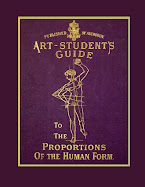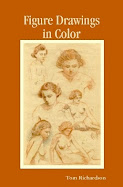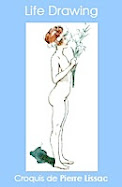Anatomy Improv'd and Illustrated With Regard to the Uses thereof in Designing and Knowledge of the Bones and Muscles of the Human Body also Illustrated with the Muscular Structures of the Most Famous Statues of Ancient Rome by Bernardino Genga
Figure 19. Shows the balance and movement of a figure that is about to strike with a club. He begins his motion by pulling his arm back so that his forward movement will have more force. His center of gravity is balanced over the foot which takes most of the weight.
Translation:
CAP. CLXXXI. The powerful movements of the limbs of man.
That arm will be more powerful and have a longer motion when moved from its natural location, it will have a more powerful grip when withdrawn from the location that it wants to move to, as (Fig. 19.) a man's trunk A. moves with the arm E. and the other arm will move itself with the whole person B.
CAP. CLXXXI. Delli moti potenti delle membra dell' uomo.
Quel braccio sarà di più potente e lungo moto, il quale sendosi mossodal suo naturale sito , averà più potente aderenza degl'altri membri a ritirarlo nel sito dove lui desidera muoversi. Come l' uomo A. (Fig. 19.) che muove il braccio col tratto E.' e portalo in contrario sito col moversi con tutta la persona in B.
 More images from Bernardino Genga's work at the National Institute of Health's Historical Anatomies on the Web.
More images from Bernardino Genga's work at the National Institute of Health's Historical Anatomies on the Web.Notes about Anatomy Improv'd and Illustrated by Bernardino Genga from a description of the book is from History and Bibliography of Anatomic Illustration in its Relation to Anatomic Science and the Graphic Arts
Right is an animation of one of Eadweard Muybridge's studies of motion similar to Leonardo's illustration, a man hitting a ball.

Left is one of my abstractions from Bernardino Genga's work.
Anatomia per uso et intelligenza del disegno ricercata non solo su gl ' ossi, e muscoli del corpo humano, ma dimostrata ancora su le statue antiche più insigni di Roma. Delineata in più tavole con tutte le figure in varie faccie, e vedute. Per istudio della regia academia di Francia pittura e scultura, sotto la direzzione di Carlo Errard gia direttere di essa in Roma. Preparata sù i cadaveri dal dottor Bernardino Genga regio anatomico. Con le spiegazioni et indice del Signor Canonico Gio. Maria Lancisi. Opera utilissima d pittori e scultori et ad ogni altro studioso delle nobili arti del disegno. Data in luce da Domenico de Rossi, herede di Gio. Jacomo de Rossi, nella sua stamperia in Roma alla Pace, il di XV. Settembre, 1691, Libro primo, large fol., 56 copperplates.

Left is another animation based on Muybridge's studies, this time of a man throwing a ball. Just like the description of Figure 19. above, the man pulls his arm back before beginning his motion, to give his motion extra force.
The fifty-six copperplates are printed only on one side. On the engraved title the words Libro Primo seem to have been added later and are evidently meaningless since no Libro Secondo follows. There is also a dedication by Rossi addressed to Giovanni Tiracorda, medico primario dell' Archiospedale di S. Spirito e gia pontificio. This title is followed by an allegoric sheet with the emblems of Death and with the following inscription: Ingredimur cuncti dives cum paupere mixtus. Then follows the work itself. Of the plates with pictures nine pertain to osteology, and fourteen to myology; sixteen are representations of antique figures viewed from different sides, namely, the Farnese Hercules, the Laocoòn (without his sons), the Gladiator, and the Borghese Faun. Of the plates with text seven pages are devoted to osteology, seven to myology, and one page to an Indici delle cose notabili. Thus the entire book consists of sixteen pages of text and forty pages of illustrations...
 All the plates are excellent anatomically as well as artistically. The work is even today one of the most useful for the needs of plastic and graphic artists. The engraver is probably Francois Androit (Handeroit), and the artist Charles Errard, director of the French Academy in Rome, who died there in 1689. The Papal physician Giovanni Maria Lancisi (b. October 26, 1654, d. January 21,1720), to whom we owe the publication of the Eustachian plates, wrote the explanations.
All the plates are excellent anatomically as well as artistically. The work is even today one of the most useful for the needs of plastic and graphic artists. The engraver is probably Francois Androit (Handeroit), and the artist Charles Errard, director of the French Academy in Rome, who died there in 1689. The Papal physician Giovanni Maria Lancisi (b. October 26, 1654, d. January 21,1720), to whom we owe the publication of the Eustachian plates, wrote the explanations.Left, one of the original prints from Bernardino Genga's Anatomy Book.
Related Books:
Human Figure in Motion Interactive CD-ROM
























No comments:
Post a Comment